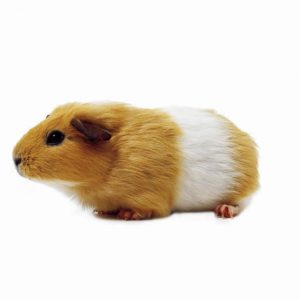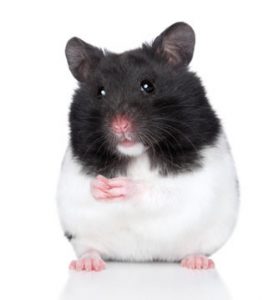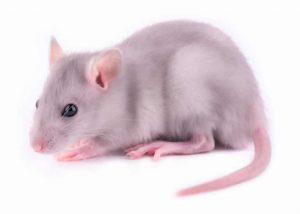Meadows Small Pets Advice
With proper housing, care and attention, your pet guinea pig can live for up to 10 happy years and sometimes longer. 4 – 5 years is typical though for a domestic guinea pig.
 As children are their main owners, here are some guidelines on keeping your guinea pig healthy and happy.
As children are their main owners, here are some guidelines on keeping your guinea pig healthy and happy.
Guinea pigs are friendly, chatty and very responsive to caring owners. They each have their own character which makes them endlessly fascinating.
They are herd animals and would naturally live in large groups.
They are also known as cavies as they originate in caves and rocky areas in South America where they live in colonies as a form of defence against ever present predators.
As they are so gregarious, they do get lonely and it is best to keep at least 2 together, but beware the speed with which a mixed pair will breed. If you do want to breed, the sow must be between 5 and 9 months before she has her first litter. You can keep any number of females together.
Males or boars are best kept in pairs – if a younger male is introduced to an older one, he must have a tube or pipe he can hide in initially to hide from his bigger new hutch mate.
Do not keep guinea pigs and rabbits together if they have not already been used to each other from a very young age. Rabbits have strong back legs and uncontrollable urges in uncastrated males to mate. This may lead to sometimes potentially fatal wounds in your guinea pig.
Ensure that the hutch they live in is large enough for your guinea pig to stand on its hindlegs without its head touching the roof. Outdoor hutches should have a sloping roof with an overhang to protect it from bad weather and covered with roofing felt to prevent it leaking. It should be away from draughts and direct sunlight.
It should be raised off the ground and have mesh with holes that are very small to prevent mice from entering. This happens commonly as mice are attracted to your guinea pig’s food. They can spread disease.
Guinea pigs are heat and cold sensitive so never keep them in greenhouses. Do not keep their hutches in garages that house cars as they may be affected by the car fumes.
Their enclosure can be brought indoors if it gets too cold but keep them away from other pets, the TV and radiators. They will need an enclosed outdoor run – the tent-shaped varieties are very good as predators such as cats and foxes are unable to enter.
Ensure that there is always somewhere it can hide – a tube or drainpipe is adequate just in case it sights a predator. Outdoors is where you can watch your guinea pig running around and squeaking happily. Any signs of lethargy, not eating or scratching means we will need to see your little pet.
We advise feeding hay and fresh vegetables and good quality guinea pig nuggets to your pet. Guinea pigs are unable to process Vitamin C and require supplementing, or feed fresh carrots, sweet red pepper and the occasional orange/satsuma in their food.
Hamsters are the most popular of the small pets. They are very clever and adventurous little animals and deserve consideration, care and commitment from their owner.
History
 It is believed that all the Syrian hamsters (the usual bigger hamsters that we see most commonly) all originate from one female and her litter captured in the Syrian desert in the 1930s. Hamsters belong to the rodent family and their name ‘hamster’ is derived from the German word ‘hamstern’ which means ‘ to hoard’.
It is believed that all the Syrian hamsters (the usual bigger hamsters that we see most commonly) all originate from one female and her litter captured in the Syrian desert in the 1930s. Hamsters belong to the rodent family and their name ‘hamster’ is derived from the German word ‘hamstern’ which means ‘ to hoard’.
Wild hamsters live in hot areas of Central Asia. To avoid the heat of the day, hamsters live in burrows and are nocturnal.
In the cool of the evening and during the night hamsters will search for food and can travel up to 8 miles in one night.
This might explain why your pet hamster can be up for hours running in its wheel as soon as the lights go out. They run such distances to collect food in their cheek pouches and return to their burrows and empty the cheek pouches into their food store. They are able to carry up to half their body weight in their pouches. Their latin name Mesocricetus auratus means ‘golden hair.’
Colours/ patterns/ markings
There are over 20 different breeds of hamsters, each with their own individual markings and colours. The Dwarf Hamsters (Russian, Chinese and Roborovski) are small, very sociable, and will enjoy being kept in pairs or in groups (remember to keep them in single sex pairs or groups if you don’t want to breed from them.)
Russian hamsters are mainly white, grey and brown in colour, and the Roborovski hamster is always brown. The Chinese hamster has a greyish brown coat with a dark stripe down its back.
Feeding your hamster
In their natural habitat, hamsters eat a range of grasses, wind-blown seeds and grain. Hamsters are often mistaken as herbivores, but they are omnivores and need high amounts of protein in their diet to keep them healthy. Left alone in the wild, they will find grubs and insects to supplement their diet.
The bulk of their diet is cereals and other hard foods which are chewed and digested slowly. This slow eating would make them easy targets in the wild, so they would normally bring their food back to their burrow to eat it in the safety of their own home.
This also allows them to hoard spare food, in case it becomes difficult to find food at a later date. (A balanced, coarse mix of hamster food is recommended).
As long as there is a good mix of ingredients such as alfalfa, maize, wheat, naked oats, beans, peas and sunflower seeds to provide just the right amount of protein in your hamster’s diet. This variety of ingredients encourages foraging – a natural behaviour in hamsters. Hamsters need feeding everyday.
As they are nocturnal, an evening meal is better for them. They will normally wake at feeding time and will be happy to play with you once they have been fed. A good quality heavy, earthenware food bowl is essential to keep the food dry and clean. Plastic should be avoided as hamsters will chew it. Their bowls must be cleaned after every use.
Treats that you buy or small pieces of apple, carrot or maize (that hamsters love) can be hidden around the cage to encourage your hamster to forage. You should try to prevent your hamster from becoming a selective feeder and leaving some of his food by reducing the amount you feed him until he eats all of it.
Then slowly increase the amount again to the recommended daily allowance. Ensure there is fresh water available at all times.
Housing your hamster
Hamsters can be housed in a wire cage with a plastic base, a plastic hamster home or an adapted aquarium (vivarium) with a well-ventilated cover. Wooden cages should not be used as hamsters can chew their way out.
The most important thing to remember is that a hamster home can never be too big – they love to explore and exercise. Multi – level cages are a good idea as they add interest to the hamster’s environment – but be careful with plastic tubes as the larger Syrian hamsters may get stuck.
Provide soft bedding under the hole or a little ladder. The hamster home must always have a place for your hamster to rest and hide, and another area for play, exercise and feeding.
Hamsters must always be kept indoors and careful thought should be given to where your hamster’s home is situated. The temperature in the room should always be constant, away from direct sunlight and draughts and away from constant noise (such as a freezer). Because they have sensitive hearing, they should never be placed near a television, CD player Hi-fi etc.
Choose a cleaner that eliminates odours, germs and bacteria. There are cleaners from petshops that are specific for hamster cages. Clean the cage regularly or as soon as there is any odour. Use bedding that is absorbent but be careful of synthetic bedding as this could harm your hamster if he ate it and might block his cheek pouches, food pipe or gut.
Use a natural bedding such as good quality barley straw which is treated with a cleaning agent and is dust – free.
Ferret Facts
 Latin name: Mustela Putorius Furp
Latin name: Mustela Putorius Furp
Young: Kittens
Vasectomised males: Hobbles or Vassies
Life span: 5 – 11 years (domesticated)
Litter size: 5 – 13 kits
Birth weight: 8 – 10 grams
Eyes open: From four weeks
Gestation period: 38 – 44 days
Average weight: male 700-2000 gms, female 600-900 gms.
Sexual maturity: male 5-9 months, female – spring after birth
Weaning age: 6 – 8 weeks
Diet: Carnivorous
Vaccinations: Canine Distemper
Ferret Husbandry
*Ferrets are carnivorous animals so need an appropriate diet containing meat. Good-quality ferret food available from pet shops is appropriate, although they can also be fed good-quality cat food.
*Ferrets left with free run of the house will cause a lot of damage, and can get themselves into trouble with their ability to fit into very small spaces. Therefore they should be kept in a large cage.
*The cage should contain a water bottle, ceramic food bowl, and a litter tray. They also enjoy having toys to play with e.g. small balls (that he/she can’t chew or swallow), feeding balls and tunnels.
*The litter tray should contain wood shavings or normal odour-free cat litter and be emptied daily. Ferrets may need to be trained to use the tray – you can start by placing some droppings in the tray and placing him/her in it if they start circling/pacing.
*Dust-extracted bedding material should be provided in the cage
*Ferrets enjoy sleeping above ground level so an ideal accessory to keep them happy is a hammock. A simple square of material hung from the top of the cage will serve this purpose.
*Ferrets are extremely active and very playful. Always find time to socialise with your ferret on a daily basis, this will add variety and stimulation to your pet’s day.
*Ferrets can be bathed twice a month with a mild shampoo
*Clipping your ferret’s nails can be tricky as they often wriggle lots. They can be distracted with a treat such as a mineral lick.
*If you have small mammals such as rabbits or hamsters, you must exercise extreme caution with regards to ferrets.They are natural enemies, and your ferret may kill them. In general, ferrets usually get along with cats and dogs.
*It is not recommended to leave hunting breeds like terriers and hounds alone with ferrets as their instincts may take over and your ferret could be hurt.
Handling ferrets correctly
*Handle young ferrets as much as possible to prevent biting. Ferrets should be purchased from a reputable breeder who has handled him/her as a youngster.
*Allow your ferret to come to you before picking him/her up. This prevents frightening them and reduces the risk of being bitten
*Ferrets should be grasped around the shoulders, with your thumb under their mouth and supporting the hind legs with your other hand, then gently bring the ferret against your chest.
* Ferrets have a natural instinct to bite. If your ferret is prone to nipping, train them properly by scruffing them every time they nip and saying NO.
*They can be trained to sit quietly in a pouch or pocket with patience and perseverence.
*You are able to bath your ferret at least twice a month with a mild shampoo.
*To clip your ferrets’ nails, allow him to lick a vitamin treat whilst clipping them to distract him otherwise they move too much.
Preventative health care
*Ferrets should be vaccinated against Canine Distemper from 12 weeks of age. It is a single vaccination that needs to be done yearly. If ferrets are not vaccinated they can pick up this often fatal disease. Clinical signs include discharge around the eyes, nose and chin, loss of appetite, rashes and lethargy.
*The ferret breeding season in the UK runs from Spring to Autumn.
If jills (females) are left unmated, they remain in oestrus for a prolonged period, resulting in bone marrow suppression and anaemia. This can be fatal. It is therefore recommended that females are allowed to mate with a male when in oestrus. The male should be vasectomised first so he cannot get the female pregnant.
Common Illnesses
Ferrets can be affected by a number of common conditions. These include respiratory infections, diarrhoea, vomiting, ear mites, urinary tract stones, heart disease and adrenal gland tumours.
If you are at all concerned that your ferret is unwell then please phone the practice to make an appointment.
Rats are agile, sensitive little animals that deserve commitment when being looked after as a pet.
Rats belong to the rodent family. There are over 80 different species of rat throughout the world.
 Feeding your Rat
Feeding your Rat
In their natural habitat rats will scavenge for their food and will eat almost anything.
Rats are omnivores and need protein to keep them in good condition.
This can be in the form of cheese, but good quality rat pellets will provide them with the balance they need. Rats need a quality rat mix that does not contain nuts or seeds as these can cause skin problems and spots. Too much green food will cause diarrhoea.
If you feed your rat human food, remember to avoid foods that are high in calories, sugary or contain too much fat – rats can get obese very quickly. Rats need feeding once a day, everyday.
A good quality heavy earthenware food bowl is essential to keep the food dry and clean and prevent your rat from tipping the food onto the floor of the cage. Their bowls must be cleaned after every use. You should try to ensure that your rat eats all of his food from a very young age.
Prevent selective feeding (where your rat leaves some of the ingredients in coarse mixes) by reducing the amount until he eats all of it. You can then slowly increase it to the recommended daily allowance. Ensure that there is fresh drinking water available at all times.
How to house a Happy Rat
Rats can be housed in a wire cage with a plastic base, a plastic rat home or a large vivarium with a well-ventilated cover. Wooden cages should not be used as rats will chew their way out. The important thing to remember is that a rat home can never be too big as they love to explore and exercise.
Multi – level cages are a good idea as they add interest for your intelligent rat. They love to hide and climb and will enjoy playing with a sisal rope or large rat wheel. A hammock is the perfect place for them to play and rest above the ground. Rats are best kept indoors and careful thought should be given to where your rat’s home is situated.
The temperature in the room should be constant, away from direct sunlight and draughts and out of the reach of any other pets. A rat’s hearing is extremely sensitive so he should be situated away from loud noises such as a stereo.
Cages should be cleaned out on a regular basis. This is especially important in warmer weather to reduce odours. Keeping your rat warm and cosy at night is very important (especially if he is of the Hairless variety).
Use bedding that is absorbent. Untreated, unthreshed straw should not be used as it can scratch your pet. It is also recommended that you provide bedding that is dust extracted as this reduces irritation to the eyes, nose and respiratory system. Choose a good pet shop to buy cage cleaners and bedding. Barley straw and woodshavings are excellent for rats especially if they are treated with a non-toxic cleaning agent to eliminate pet odours, germs and bacteria and are dust free.
Handling your Rat
Before attempting to handle your rat, make sure he is awake and alert or he might be scared and try to bite you. Talking to your rat makes him aware that you are close by and wanting to socialise.
Always approach your rat calmly and gently. Once your rat knows you are near, place a closed fist in front of him and allow him to approach. If he is confident and appears interested, slowly unclench your fist and open your hand to allow him to crawl on to your palm.
If he does not approach you, gently scoop him up and cup him in the palms of your two hands to ensure he is safe and won’t be dropped. Never pick a rat up by his tail.
Companionship
Rats are very social animals and will become unhappy if left alone, so keeping them in pairs is best. Two males or two females from the same litter will get on extremely well and be great company for each other. Rats enjoy ‘play-fighting’, but if you introduce an older rat to another rat, they may fight seriously and cause injury.
Don’t keep a male and female together unless you want to breed from them.
